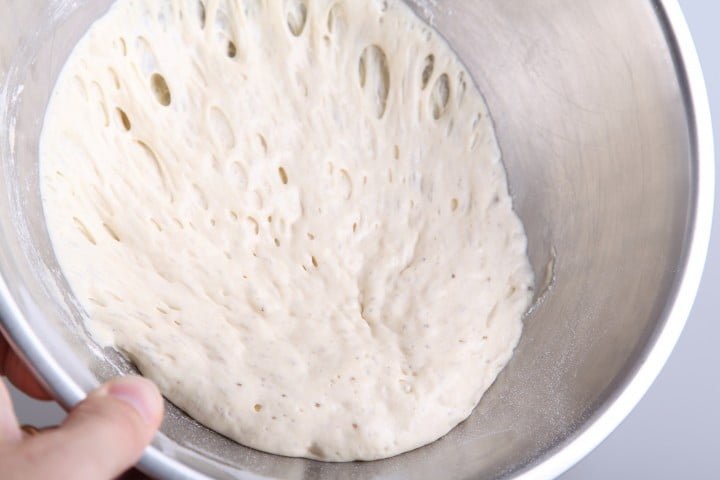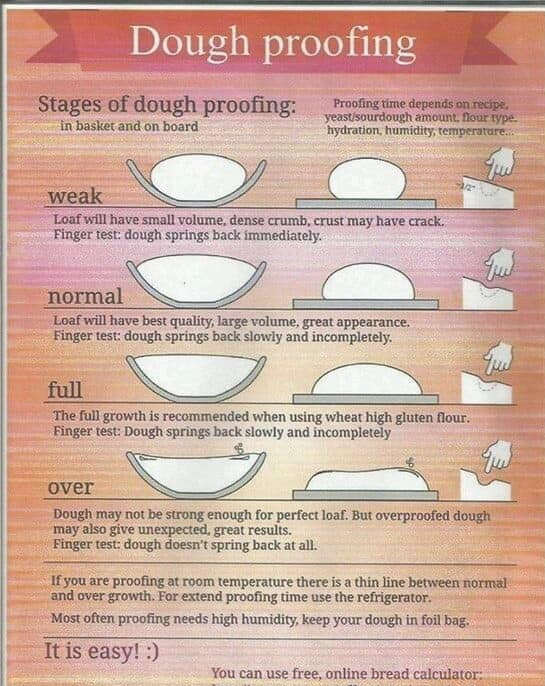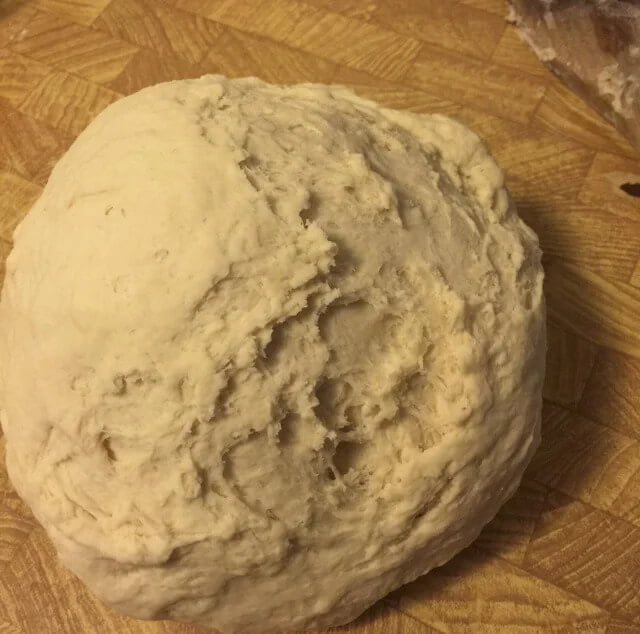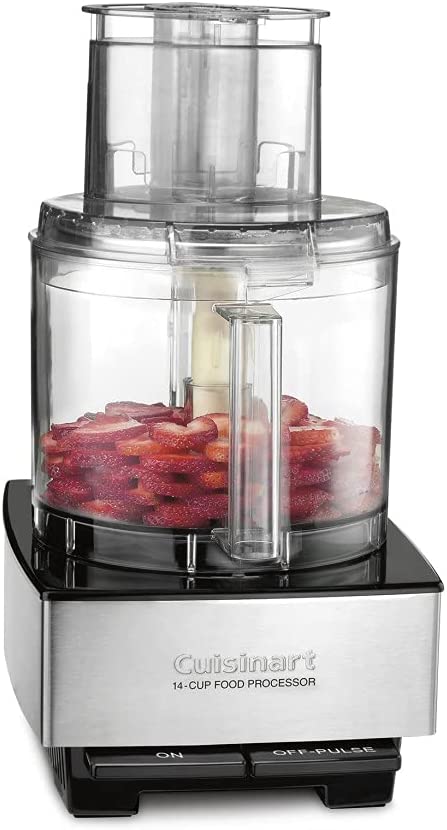Guide To Fix Overproofed Pizza Dough
Making pizza dough is a relatively easy process, but it can be tricky to get the perfect texture. If you’ve ever made pizza dough from scratch, you know that the key to a great crust is letting the dough rise properly and the yeast is a key ingredient.
But what happens if you add too much yeast – or if the dough proofs for too long? And what do you do if your dough has overproofed and is too fluffy? This can be a frustrating experience, but don’t worry – there is a solution!
In this blog post, we will teach you how to fix overproofed pizza dough. By following our tips and tricks, you will be able to enjoy your perfect pizza once again. So what are you waiting for? Read on to learn more!
What Is Overproofed Pizza Dough?
Overproofed pizza dough is dough that has risen for too long or with too much yeast. This can cause the pizza crust to be excessively puffy and flaky, and it may even collapse when you try to bake it.
Overproofed pizza dough is dough that has been allowed to rise for too long. This can cause the yeast to produce too much gas, resulting in a dough that is too light and airy.
The texture of overproofed dough can be difficult to work with, and it may not hold up well when you try to bake it.
Not only is overproofed pizza dough aesthetically unappealing, but it can also impact the taste of your pizza. When dough proofs for too long, the gluten breaks down and the flavor of the yeast becomes more pronounced. This can make your pizza taste sour and unpalatable.
There are a few different ways that you can tell if your dough has overproofed.
The first is by looking at it – overproofed dough will be very puffy and soft, almost like a marshmallow. Another way to tell is by gently pressing your finger into the dough – if the indentation stays, the dough is overproofed. Finally, you can try to stretch the dough – if it tears easily, it is overproofed.
If you notice any of these signs, it’s important to take action quickly. The longer you let the dough proof, the more pronounced these problems will become.
Can Pizza Dough Be Overproofed?
Yes, Pizza dough can absolutely be overproofed. This usually happens when there is too much yeast in the dough, or if it proofs for too long.
The result is a pizza crust that is too fluffy and soft, and may even collapse when you try to transfer it to the baking stone.
If your pizza dough has overproofed, don’t despair! There are a few things you can do to rescue it. With a little effort, you can still enjoy a delicious pizza night.
What Causes Overproofed Pizza Dough?
There are two main causes of overproofed pizza dough: too much yeast, or too much time.
If you add too much yeast to your dough, the dough will proof too quickly. This is because the yeast will start to produce carbon dioxide gas, which will cause the dough to rise.
If you let the dough proof for too long, it will also become overproofed. The yeast will continue to produce gas, causing the dough to become too puffy and soft.
It’s important to note that both of these problems can be caused by incorrect measurements. If you’re not measuring your ingredients correctly, it’s very easy to add too much or too little of something. This is why we always recommend using a kitchen scale when making pizza dough!
The Signs That Your Pizza Dough Has Been Overproofed
There are a few telltale signs that your pizza dough has been overproofed.
1) The pizza dough has more than doubled in size: This is the most obvious sign that your dough has overproofed.
2) The pizza dough is very soft and sticky: This is another common sign of overproofing.
3) The pizza dough is difficult to work with: If you find that your pizza dough is hard to stretch or shape, it may be overproofed.
4) The pizza dough has large bubbles: Large bubbles are another sign that your pizza dough has been overproofed.
5) The pizza crust is dense and tough: This is the most common result of overproofing pizza dough. If you find that your crust is dense and tough, it means that the gluten in the dough has become overdeveloped, resulting in a less than ideal texture.
6) The pizza dough has lost it’s shape: If your pizza dough has become flat and shapeless, it is a sure sign that it has been overproofed.

These are just a few of the signs that your pizza dough has been overproofed. If you see any of these signs, it is best to throw out the dough and start again.
How To Fix Overproofed Pizza Dough
If you find that your pizza dough has been overproofed, don’t despair! The good news is that you can usually save overproofed pizza dough.
The first thing you need to do is gently deflate it by pressing down on the dough with your hands. Then, shape it into a ball and let it rest for 10-15 minutes.
After that, you should be able to roll out the dough and use it as normal. In most cases, the dough will be a little bit tougher than usual, but it will still taste fine. If the dough is too sticky to work with, you can add a little bit of flour to help make it easier to handle.
If your pizza dough has overproofed, there are a few things you can do to rescue it. Read on to learn more.
1. Try to gently deflate the dough
The first thing that you can do is to try to gently deflate the dough. This will help to release some of the gas that has been produced by the yeast.
This can be done by pressing down on it with your hands or by using a rolling pin. Be careful not to press too hard, as this can make the dough tough. If the dough is still too puffy after being deflated, move on to the next step.
- Punch down the dough: This is the most common way to rescue overproofed pizza dough. Simply use your fist to punch down the dough and release some of the gas that has built up inside.
- Use a rolling pin: If the dough is too sticky to work with, use a rolling pin to flatten it out. Then, you can proceed with shaping and stretching the dough as usual.
2. Let the dough rest
Once you have deflated the dough, if the dough is difficult to work with, let it rest for 10-15 minutes before trying to shape or stretch it. This will give the gluten a chance to relax, making the dough easier to work with.
3. Roll out the dough and shape it
After the dough has rested, try to roll it out into your desired shape. If the dough is still too puffy or soft, you may need to let it rest for a few more minutes before proceeding.
Once you have shaped the dough, place it on a baking sheet and let it proof for the second time (but not as long as before!).
4. Bake the dough
Once you’ve fixed your overproofed pizza dough, you’re ready to bake! Follow your usual recipe instructions, and enjoy your delicious pizza.
If you find that the dough is still too soft after baking, try reducing the oven temperature next time.
Bonus tips
🔸 Refrigerate it: If you’re not ready to use the dough right away, you can refrigerate it for up to 24 hours. This will help to slow down the fermentation process and prevent the dough from overproofing further.
🔸 Use it for bread: If your pizza dough is too far gone to be salvaged, you can always use it for bread! Just shape it into a loaf and bake as usual. You may find that the texture is a bit off, but the bread will still be delicious.
Overproofed pizza dough can be a frustrating experience, but it is possible to rescue it! By following our tips and tricks, you will be able to enjoy your perfect pizza once again. So what are you waiting for? Get out there and fix that dough!
How to Check if the Pizza Dough is Proofed, Overproofed, or Underproofed?
To see if the pizza dough is proofed, overproofed, or underproofed, you will need:
1. A bowl of water: This is for submerging your hand in.
2. Pizza dough: This can be store-bought or homemade. If you’re using store-bought dough, make sure to let it come to room temperature before proofing.
3. A timer: This is for timing how long the dough takes to rise.
4. Flour: This is for dusting the work surface and your hands.
5. A baking sheet: This is for baking the pizza on.
To check if the pizza dough is proofed, first flour a work surface and your hands. Then, gently shape the dough into a ball.
Next, place the dough in a bowl of water. The water should come up to about halfway up the dough ball.
🔸 If the dough floats to the surface, it is overproofed and needs to be kneaded again.
🔸 If the dough sinks to the bottom of the bowl, it is underproofed and needs to be left to rise for longer.
🔸 If the dough stays in the middle of the bowl, it is proofed and ready to be used!
If you’re not ready to use it right away, you can refrigerate it for up to 24 hours. Just make sure to bring it back to room temperature before using.
Now that you know how to check if the pizza dough is proofed, overproofed, or underproofed, you’re ready to make some delicious pizza! Follow your favorite recipe or try one of our easy pizza recipes. Bon appétit!
Tips For Preventing Overproofed Pizza Dough
To prevent overproofed pizza dough, it’s important to measure your ingredients correctly. We recommend using a kitchen scale, as this will help to ensure that you’re adding the right amount of each ingredient.
It’s also important to proof your dough for the correct amount of time. Proofing times will vary depending on the recipe, so be sure to follow the instructions carefully.
If you’re not sure how long to proof your dough, err on the side of caution and proof it for less time rather than more. You can always let it sit for longer if needed, but you can’t undo overproofing!
Finally, don’t forget to check on your dough periodically while it’s proofing. This will help you to catch any problems early on, and prevent your dough from overproofing.

With a little care and attention, you can avoid overproofed pizza dough and enjoy a delicious pizza night!
✅ Use a kitchen scale: This is the best way to ensure that you are using the correct amount of yeast. Too much yeast will cause the dough to rise too quickly and overproof.
✅ Follow the recipe: Don’t try to change it! If you’re not sure about something, look up another recipe or ask a baking expert.
✅ Use a thermometer: One of the best ways to prevent overproofed pizza dough is to use a food thermometer.
Stick the thermometer into the center of the dough while it’s proofing. If the temperature exceeds 80°F, it’s overproofed and needs to be kneaded again.
✅ Keep it cool: Another way to prevent overproofed pizza dough is to keep it cool while it’s proofing.
If your kitchen is warm, try proofing the dough in the fridge or even the freezer (just make sure to let it come back to room temperature before shaping and baking).
✅ Use less yeast: Using less yeast will also help to prevent overproofed pizza dough.
If you’re using active dry yeast, make sure to proof it in water before adding it to the dough. This will help to reduce the amount of yeast that actually ends up in the dough.
✅ Use a shorter proofing time: Proofing the dough for a shorter amount of time will also help to prevent it from overproofing. If you’re not sure how long to proof the dough, start with half of the recommended time and go from there.
✅ Be careful with gluten-free flour: Gluten-free flour doesn’t contain gluten, which is what helps to trap gas bubbles in the dough and give it structure.
As a result, gluten-free pizza dough is more likely to overproof. To prevent this, use a shorter proofing time and add less yeast to the dough.
✅ Use an airtight container: this will help to prevent the dough from drying out and overproofing.
✅ Keep an eye on it: check on the dough every so often to make sure it’s not overproofing.
By following these tips, you can prevent overproofed pizza dough and enjoy perfect pizza every time!
Recipes For Delicious, Perfectly-proportioned Pizza Dough Every Time
Pizza dough is one of those things that’s easy to make at home, but sometimes it can be a little tricky to get it just right.
The perfect pizza dough should be soft and slightly sticky, but not too wet. It should be easy to work with, and it should hold its shape when you stretch it out.
If your pizza dough is giving you trouble, we’ve got you covered! Here are three recipes for delicious, perfectly-proportioned pizza dough that will help you make the best pizza ever:
1. Classic Pizza Dough
Ingredients:
- 1 tablespoon active dry yeast
- 1 teaspoon sugar
- 1 cup warm water
- 2 1/2 cups all-purpose flour
- 1 teaspoon salt
- 2 tablespoons olive oil
Instructions:
1. In a large bowl, combine the yeast, sugar, and warm water. Stir until the yeast is dissolved and let it sit for 5 minutes.
2. Add the flour and salt to the bowl and stir until everything is combined. Slowly add in the olive oil while stirring.
3. Turn out the dough onto a floured surface and knead for about 10 minutes, or until it’s smooth and elastic.
4. Place the dough in a greased bowl, cover it with a damp towel, and let it rise in a warm place for about an hour.
5. Once it’s doubled in size, turn it out onto a floured surface and divide it into two balls.
6. Preheat your oven to 500 degrees Fahrenheit.
7. On a lightly floured surface, stretch or roll the dough into a 12-inch circle. Place it on a greased baking sheet and bake for 8-10 minutes, or until the crust is golden brown.
2. Whole Wheat Pizza Dough
Ingredients:
- 1 tablespoon active dry yeast
- 1 teaspoon sugar
- 1 cup warm water
- 2 1/2 cups whole wheat flour
- 1 teaspoon salt
- 2 tablespoons olive oil
Instructions:
1. In a large bowl, combine the yeast, sugar, and warm water. Stir until the yeast is dissolved and let it sit for 5 minutes.
2. Add the flour and salt to the bowl and stir until everything is combined. Slowly add in the olive oil while stirring.
3. Turn out the dough onto a floured surface and knead for about 10 minutes, or until it’s smooth and elastic.
4. Place the dough in a greased bowl, cover it with a damp towel, and let it rise in a warm place for about an hour.
5. Once it’s doubled in size, turn it out onto a floured surface and divide it into two balls.
6. Preheat your oven to 500 degrees Fahrenheit.
7. On a lightly floured surface, stretch or roll the dough into a 12-inch circle. Place it on a greased baking sheet and bake for 8-10 minutes, or until the crust is golden brown.
3. Thin Crust Pizza Dough
Ingredients:
- 1 tablespoon active dry yeast
- 1 teaspoon sugar
- 1 cup warm water
- 2 1/2 cups all-purpose flour
- 1 teaspoon salt
- 2 tablespoons olive oil
Instructions:
1. In a large bowl, combine the yeast, sugar, and warm water. Stir until the yeast is dissolved and let it sit for 5 minutes.
2. Add the flour and salt to the bowl and stir until everything is combined. Slowly add in the olive oil while stirring.
3. Turn out the dough onto a floured surface and knead for about 10 minutes, or until it’s smooth and elastic.
4. Place the dough in a greased bowl, cover it with a damp towel, and let it rise in a warm place for about an hour.
5. Once it’s doubled in size, turn it out onto a floured surface and divide it into two balls.
6. Preheat your oven to 500 degrees Fahrenheit.
7. On a lightly floured surface, stretch or roll the dough into a 12-inch circle. Place it on a greased baking sheet and bake for 8-10 minutes, or until the crust is golden brown.
We hope you enjoy your pizza dough! If you have any questions or comments, please feel free to contact us. Thanks for reading!
FAQs
What happens when pizza dough is overproofed?
Does all pizza dough need proofing?
How do I know my pizza dough has achieved the right proof?
Can you use overproofed pizza dough?
However, if you’re in a pinch and need to use overproofed dough, it’s still better than no dough at all!
Where should you proof your pizza dough?
How long does pizza dough last in the fridge?
How long to let pizza dough rise?
How long can you let dough rise at room temperature?
Can you refrigerate pizza dough after it rises?
How to store pizza dough for a few hours?
How to store pizza dough overnight?
Does pizza dough need to be refrigerated?
Summary
So, if you find yourself in the unfortunate predicament of having overproofed pizza dough, don’t despair! There are ways to rescue it and still make a delicious pizza. We hope that our tips have helped and that you will be able to enjoy homemade pizza once again.
With a little creativity and some of our tips, you can rescue that dough and have a delicious pizza to enjoy. Have you ever had to rescue overproofed pizza dough? What tricks did you use? Share with us in the comments below or on our Facebook page.
Hopefully this article has helped you rescue overproofed pizza dough. If not, don’t worry – we have a few more tricks up our sleeves. Our team of experts are always here to help, so feel free to reach out if you need any assistance or want some tips for the next time you make pizza dough. Thanks for reading and happy baking!




